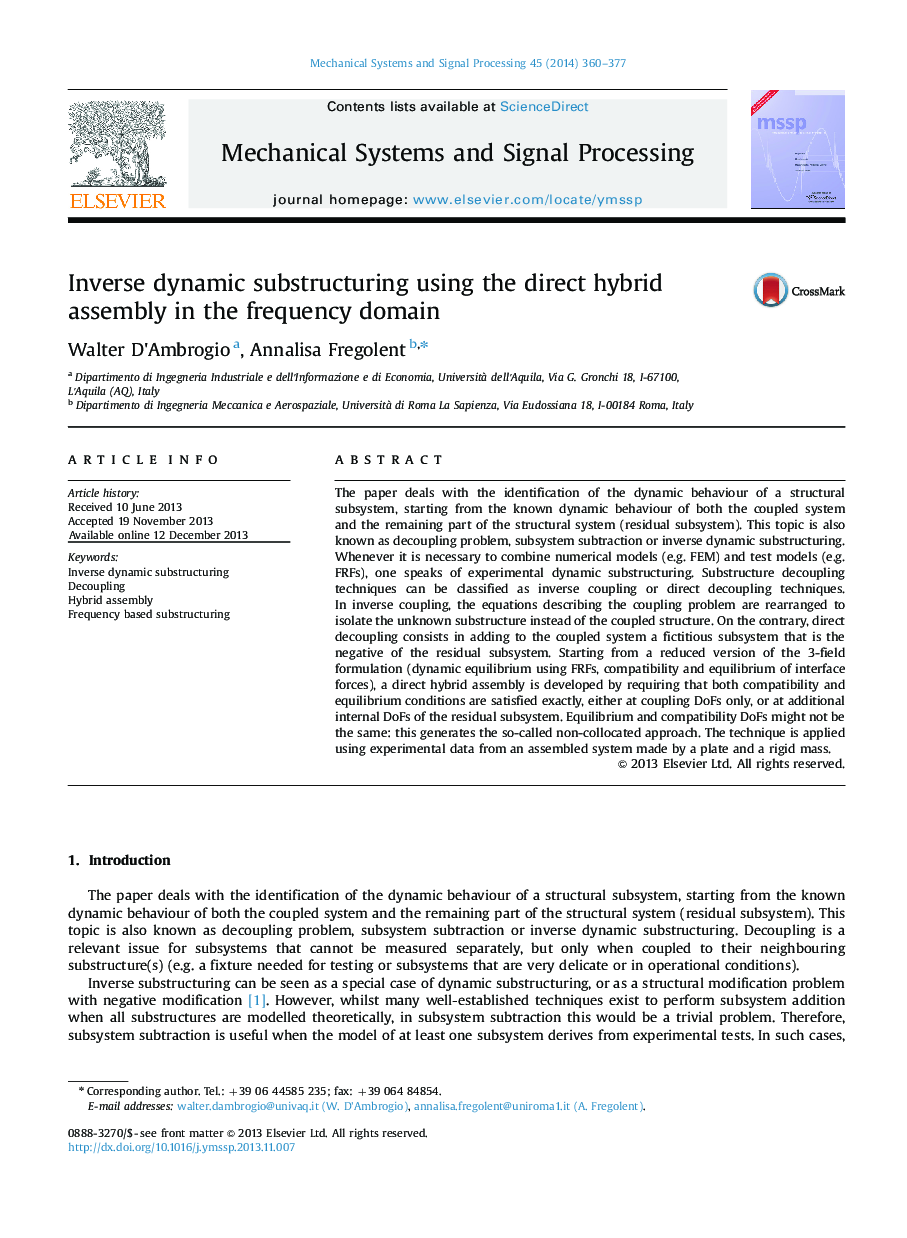| کد مقاله | کد نشریه | سال انتشار | مقاله انگلیسی | نسخه تمام متن |
|---|---|---|---|---|
| 560493 | 875164 | 2014 | 18 صفحه PDF | دانلود رایگان |
• The paper deals with inverse dynamic substructuring, or decoupling.
• A reduced version of the 3-field formulation is presented.
• The formulation is particularly suited for experimental dynamic substructuring.
• Hybrid assembly is introduced to satisfy compatibility and equilibrium conditions.
• Dual and hybrid assembly are compared using data from an experimental test bed.
The paper deals with the identification of the dynamic behaviour of a structural subsystem, starting from the known dynamic behaviour of both the coupled system and the remaining part of the structural system (residual subsystem). This topic is also known as decoupling problem, subsystem subtraction or inverse dynamic substructuring. Whenever it is necessary to combine numerical models (e.g. FEM) and test models (e.g. FRFs), one speaks of experimental dynamic substructuring. Substructure decoupling techniques can be classified as inverse coupling or direct decoupling techniques. In inverse coupling, the equations describing the coupling problem are rearranged to isolate the unknown substructure instead of the coupled structure. On the contrary, direct decoupling consists in adding to the coupled system a fictitious subsystem that is the negative of the residual subsystem. Starting from a reduced version of the 3-field formulation (dynamic equilibrium using FRFs, compatibility and equilibrium of interface forces), a direct hybrid assembly is developed by requiring that both compatibility and equilibrium conditions are satisfied exactly, either at coupling DoFs only, or at additional internal DoFs of the residual subsystem. Equilibrium and compatibility DoFs might not be the same: this generates the so-called non-collocated approach. The technique is applied using experimental data from an assembled system made by a plate and a rigid mass.
Journal: Mechanical Systems and Signal Processing - Volume 45, Issue 2, 4 April 2014, Pages 360–377
